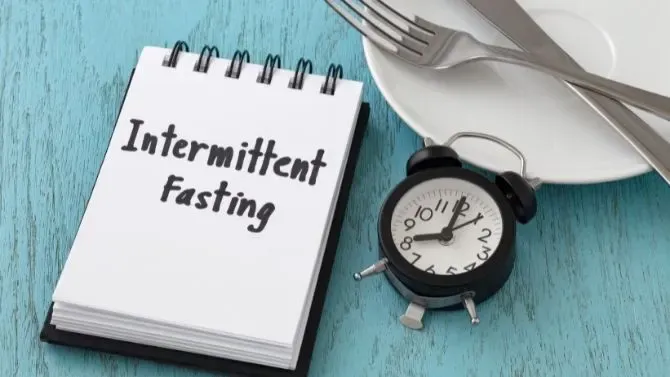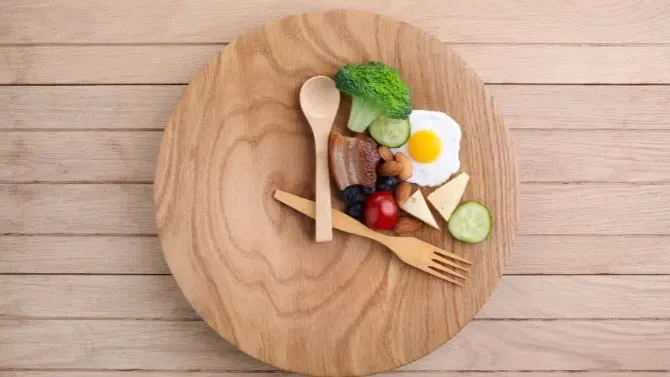Intermittent fasting: what you need to know before you start

The Beginner's Guide to Intermittent Fasting. Intermittent fasting consists of alternating phases of fasting and regular food intake. This is the easiest fast to get started! Here is all you need to know.
What is Intermittent Fasting?
This practice consists of alternating fasting and regular eating periods for a determined period. Therefore, it is not a question of a complete cessation of food but a reduction in food.This is why it is considered the easiest to set up, and it is often recommended for beginners.
Fasting periods can also alternate every other day or last several days in a row, as with 5:2 intermittent fasting.
You can plan your meal plan.
How Intermittent fasting work?

Intermittent fasting 16/8
It consists of eating only part of the day or skipping a meal (breakfast, lunch or dinner). The goal is to divide the 24-hour day into two time periods: 16 hours fasting and 8 hours eating.You can, for example, fast after the evening meal (7 p.m.) and until lunch the next day (11 a.m.). In this way, you are simply fasting by sleeping.
It can also be available in a 14/10 version (14 hours to fast and 10 hours to eat) or 12/12 (12 hours to fast and 12 hours to eat).
Intermittent Fasting 5:2
It involves eating five days a week and fasting two days. On food intake days, caloric intake is limited to 500 or 700 calories/day. This practice, therefore, alternates days of complete fasting and lean days. It is often chosen to lose weight.Intermittent fasting every other day
It consists of stopping eating one day out of 2 in the week. People who are afraid are often advised to fast for long periods.Unlike 5:2, there is no caloric intake limit. You can eat whatever you want on food intake days.
There is also a 1 in 2 "partial" form of fasting that allows up to 500 calories on fasting days. A good solution is to gradually learn the practice.
Intermittent fasting benefits

Intermittent fasting helps to lose weight.
Lightening the diet leads to a reduction in caloric intake. Undoubtedly, stopping eating or eating less leads to weight loss.Because it lacks glucose, the body draws on fat to generate energy. Thus, there is a loss of abdominal fat, as shown in this study.
Intermittent fasting Regenerates the liver
The liver is part of the emunctory organs and allows the elimination of waste from the body. However, it happens that it is saturated with toxins.The liver takes advantage of the digestive rest to purify itself in depth and eliminate the toxins that clog it. This is mainly reflected by heavy urine at the start of the practice.
Gradually, the liver regains vitality and efficiency.
Intermittent fasting Reduces inflammation
Some studies have shown reduced pro-inflammatory cytokines, such as IL-6, during fasting.This practice can be interesting in the case of chronic inflammatory diseases, rheumatoid arthritis or brain inflammation linked to Alzheimer's disease. It can also relieve inflammation during painful periods or endometriosis.
Prevents cardiovascular diseases
Reducing risk factors prevents the onset of cardiovascular diseases such as atherosclerosis. As this study shows, it notably lowers blood pressure, fights oxidative stress and improves the lipid profile (cholesterol and triglycerides).How to practice intermittent fasting?

The preparation
It may be interesting to carry out a detox cure or a revitalization cure a month before.The first helps cleanse the body, eliminate toxins, and clean the digestive system. Adopt a lighter diet based on vegetable juices, smoothies, broths, soups and infusions.
The idea is to reduce solid foods. Avoid chocolate, coffee and dairy products. You can continue taking food supplements until D-1 before fasting.
On the other hand, the revitalization cure helps fill the gaps and gain vitality. In this way, your body will be less tired the first few days, and you will feel fewer side effects: fatigue, dizziness, headaches.
The hypoxic diet, based on a diet without gluten, without fast sugars, without lactose and on gentle cooking, also increases the benefits of fasting.
Also, reduce your intake of fatty foods and foods containing refined sugar. Choose foods rich in fibre and protein that will provide energy to your body.
Also, start eating lighter in the evening.
Intermittent fastingfood program
During the 8 hours of non-fasting, you should not rush on any food. The idea is not to make a "cheat meal" but to provide nutrients and energy to your body.Choose nutritious foods and appetite suppressants that promote satiety. We recommend the following:
- fruits: bananas, apples, apricots, cherries.
- Vegetables: spinach, cabbage, chard
- lean protein sources: fish, chicken breast, shellfish
- vegetable protein sources: nuts, seeds, legumes, etc.
As for drinks, avoid those containing sugar, artificial sweeteners or alcohol. Opt for water or herbal teas. To prevent dehydration, drink throughout the day.
To avoid feeling tired during your sessions, the protein intake must be sufficient about the physical activity chosen. Gradually, you will feel less weak and gain energy.
Finally, drink enough after exercise to prevent cramps. The ideal is to do your session at the end of the fasting period, and you can eat right after and replenish your energy.
Consume broths, soups, and green vegetable juices for the first few days. You can then move to salads, vegetables, fish and chicken, but always in small quantities.
Finally, eat slowly and mindfully. The stomach must have time to assimilate the food.
Side effects
Side effects are most noticeable in the first few days. It can be:
In any case, you must be regularly monitored by a doctor.
Possible activities
It is quite possible to combine intermittent fasting and sports activity: yoga, running, bodybuilding, and this promotes weight loss and improves muscle development.To avoid feeling tired during your sessions, the protein intake must be sufficient about the physical activity chosen. Gradually, you will feel less weak and gain energy.
Finally, drink enough after exercise to prevent cramps. The ideal is to do your session at the end of the fasting period, and you can eat right after and replenish your energy.
Food recovery
Food recovery should be gradual. The longer the fast, the smoother it should be. This prevents weight gain, supports the reconstruction of the microbiota and continues the body's detoxification.Consume broths, soups, and green vegetable juices for the first few days. You can then move to salads, vegetables, fish and chicken, but always in small quantities.
Finally, eat slowly and mindfully. The stomach must have time to assimilate the food.
Intermittent fasting Side effects and contraindications
Side effects
Side effects are most noticeable in the first few days. It can be:
- headaches and dizziness
- digestive disorders
- tiredness and lack of energy
- irritability
- bad breath
- dehydration
- Always practice fasting under the supervision of a doctor.
Intermittent fasting Contraindications
This practice is not recommended for the following people:- pregnant and breastfeeding women
- thin people
- people with eating disorders (anorexia, bulimia, etc.)
- People with diabetes and/or on medication should seek advice from their doctor before starting to fast.
Intermittent fasting Maximum duration
There isn't a maximum duration for intermittent fasting, and it can be practised over several days, over several weeks or even several months. It depends on your body, your adaptation and your goals.In any case, you must be regularly monitored by a doctor.
Read More:
Post a Comment